where I1 and I2 are the intensities of the two interfering waves and phi is the phase-difference between them. The charge distribution within the crystal formed by the space modulated illumination induces a modulation of the refractive-index and in so doing it creates a so called phase grating. If an other wave (reading wave) is diffracted at this phase grating the information can be retrieved. However, if one of the writing beams and with it the interference pattern is turned off, recombination and diffusion processes as well as the remaining illumination by the reading wave cause the charge distribution to homogenize, and thereby the refractive-index modulation fades away. That means that the information will be erased after some time. If we succeed in writing the retrieved information back again correctly regarding the phase-distribution, it should be possible to keep the information in the crystal even if the signal wave is turned off. So we can create an optical refresh-cycle.
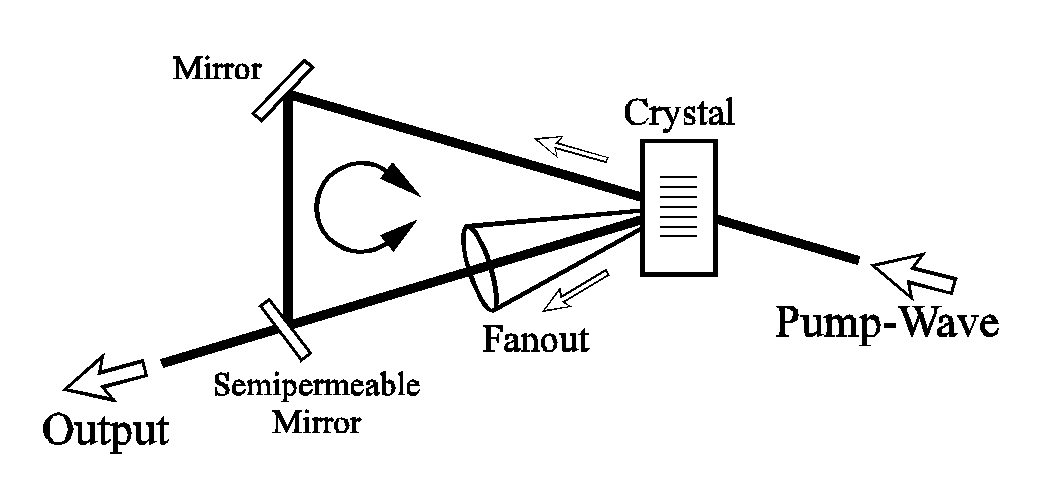
The creation of a loop-shaped beam course makes it possible that the wave
fanned in the crystal (fanout) and the pump-wave rotate clockwise and
anticlockwise, respectively, and thereby the waves travel the same distance.
Therefore, they can interfere at their re-entry into the crystal and induce
phase-gratings.
The pump-wave is diffracted at these gratings. The two-wave mixing
process proceeding as a result and the back coupling by the loop cause a
discrimination process that leads to a fanning that is directed into a smaller and smaller
angular range.
A wave is created that is phase-conjugated with respect to the pump-wave
after this has traveled the loop once.
This wave can be verified using a semipermeable mirror.
In fact we could demonstrate this phase-conjugated wave for a
wavelength of 514 nm as well as for 633 nm. The photorefractive medium was
a barium titanate crystal with 45 degree cut. Figure 2 shows the
increase with time of the intensity of the phase-conjugated wave for both wavelengths.
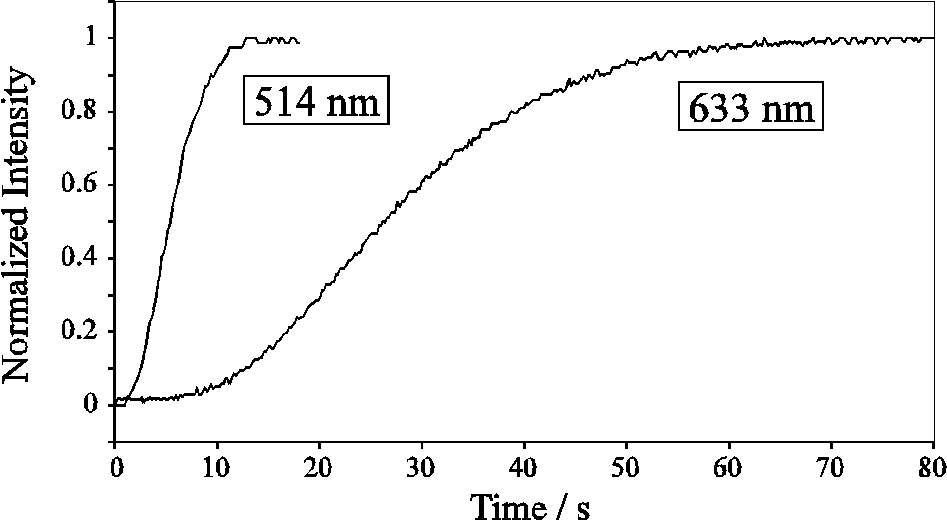
The setup as a whole corresponds to a Sagnac-interferometer and represents a
ring-resonator.
Such resonators with barium titanate crystals are known from literature [1,3],
but, to our knowledge, have not been realized using a HeNe-Laser up to now.
Because photorefractive crystals can be used as gain media in ring-resonators,
it should be possible to run them as so called "Dynamic Optically Refreshable Stores"
(DORS). However, it is necessary to keep the gratings unchanged.
The only possibility of doing this is the re-writing of the gratings by phase-conjugated waves,
as shown schematically in figure 3. For this purpose it is
necessary to use phase-conjugating mirrors (PCM) with high reflectivities.
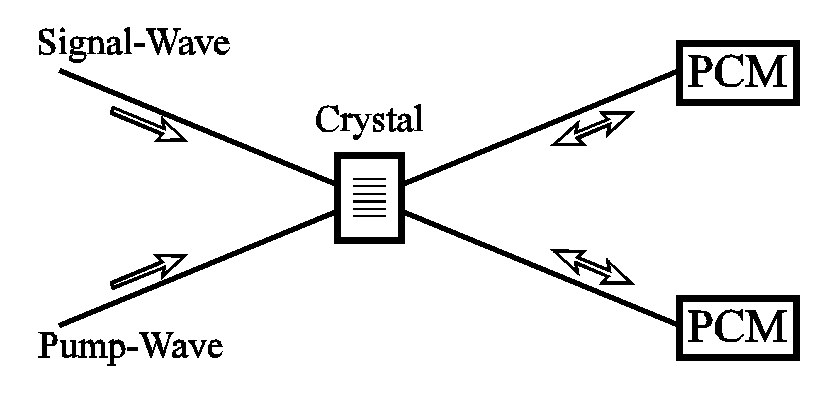
But since the reflectivity of a self-pumped PCM is always lower then unity, the
gratings and with that the information stored in the crystal will fade away
with time. A permanent storage would not be possible. In order to
avoid this we have to choose an arrangement that allows back coupling of the
amplified phase-conjugated signal-wave into the storage crystal [2]. Such an amplification
can be realized only via four-wave mixing (FWM). Figure 4 shows the setup.
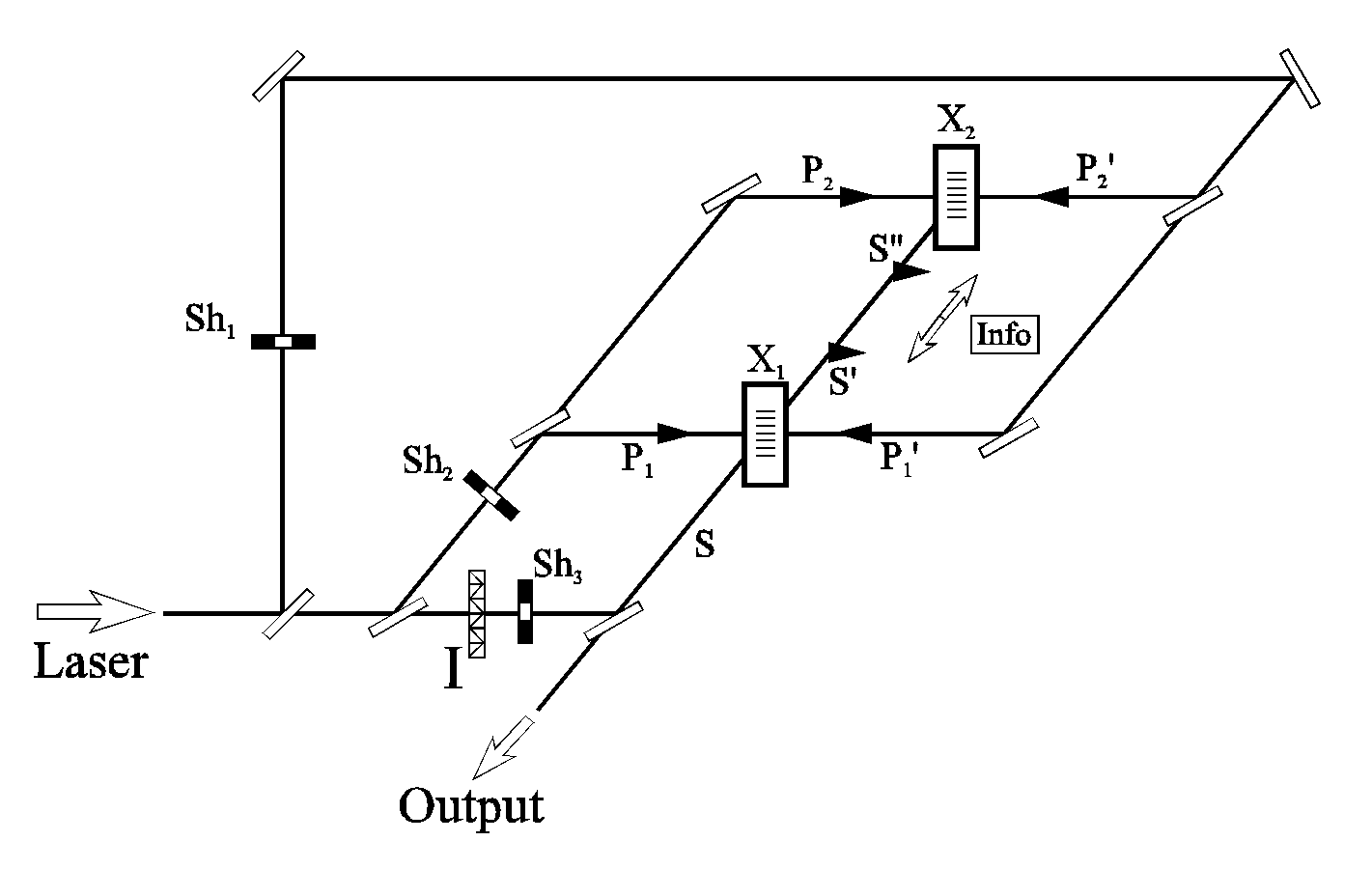
The information is stored by interference of the signal-wave S with the
pump-wave P1 in a crystal X1. After switching off the signal-wave S the pump-wave
P1 reads out the information. S propagates to crystal X2 as wave
S'. This crystal is the active element of a FWM arrangement.
As long as the wave exists it interferes with the wave P2 in crystal
X2 that works as a buffer-store for the information.
The wave P2' that is phase-conjugated with respect to P2 reads out the
information stored in crystal X2 by wave S'. So the wave
S'' is generated that is the phase-conjugated wave with respect to
S', and with appropriate pump-wave intensities it will be amplified
with respect to S'. This wave propagates to X1 and interferes there with
P1' that is phase-conjugated with respect to P1.
Thereby the initial gratings
in X1 get restored and so the original information is refreshed. The diffraction
of the wave P1 at the grating in X1 creates again the wave S' and so
the cycle continues.
The information to store oscillates between the two crystals X1
and X2, even if the signal-wave is turned off by shutter Sh3.
One problem is, according to our investigations (and contrary to [3]),
that it is impossible to reach
an amplification that is high enough to keep the optical system
working by using a continous FWM process. The reason is
that such an amplifying PCM needs a reading pump wave with an intensity
much higher than the intensity of the signal-wave. But because this pump
wave is erasing as well as reading the gratings [2,4],
the reflectivity of the PCM will drop down with time from a high value at the beginning
to a low (steady-state) value at the end.
Therefore, we have to use only the high reflectivity in a short time immediately after
switching on the reading pump-wave. This is possible by a special shuttering.
With suitable electronic shutters (Sh1, Sh2) the pump-waves are controlled in such a way
that they are switched on two at a time (P1 and P2 or P1' and
P2') in order to write in the information either in X1 or in X2.
Figure 5 demonstrates the extension of the
storing-time reached with our setup compared with the storage time using one single
crystal (only X1) without back-coupling.
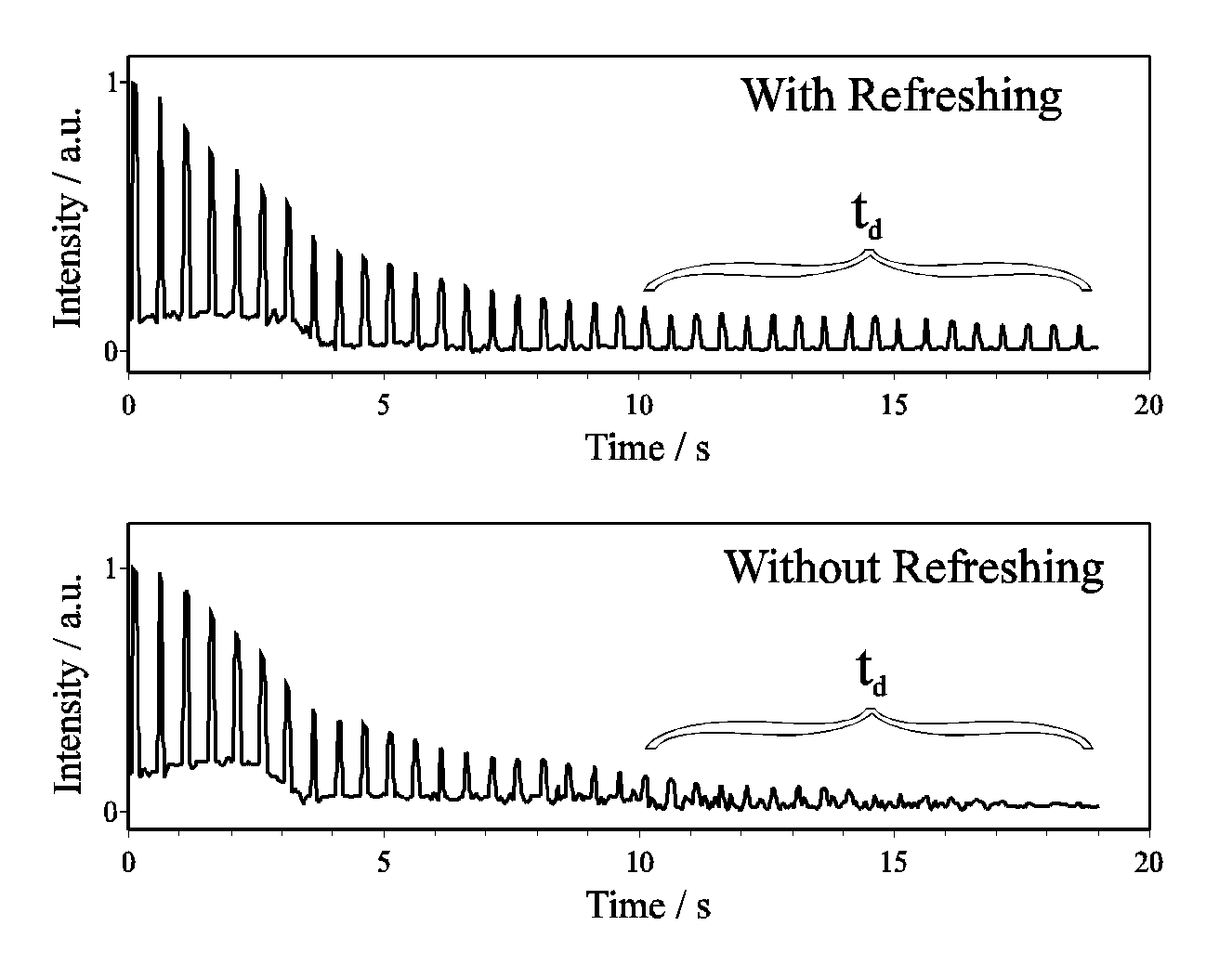
Because one can only get an output signal if
beams P1' and P2' are switched on, the graph is not a
continuous curve, but looks like the shape shown in the figure. Therefore, the envelope of
the graph describes the remaining output intensity.
In our experiments the opening time of the two shutters is 0.2 s and
the repeat-frequency of the shuttering-cycle
(Sh1 open -- Sh2 open -- pause) is 2 Hz.
As stated above, one can only recreate the stored information, when the
shutter Sh1 is open. Therefore, one can proceed on the assumption that all
output that occurs between any two opening periods of the shutter Sh1 has nothing to do
with the stored information.
This output is due to additional grating structures formed by the
interference of other waves (fanout, reflected waves) into the crystal.
It represents a kind of noise. One can only
say that the signal carrying the information is stored as long as the output during
the opening periods of the shutter is clearly higher then between them.
At the beginning of the measurements the output with and without
refreshing (back-coupling) shows no or just small differences. Obvious differences
occur only after a time (called td in figure 5) of about 10 s
that can be understood as the basic storing time of the medium.
The figure shows that for the back-coupling arrangement the pulse shape and
the signal-to-noise ratio are stable for a longer time than
without refreshing. This means that the information is stored longer.
Of course, the output intensity decreases with time and tends to reach a steady-state
at a lower limit. Therefore, this lower intensity level should in principle not have
consequences for the application of the device as an optical memory.
Figure 5 shows that the storage time increases at least by a factor two
if the refreshment is used. Because of the tendency to reach a steady-state we are
optimistic that a further extension of the storage time is possible.
In our experiments we used a plane wave without a spatial amplitude modulation as signal-wave.
So the stored information was only one bit. Of course, it should be
possible to store a wave with spatial structure and so to record larger
amounts of data.
This possibility is shown in figure 4 where a structured object ("I") is
placed within the way of the signal-wave.